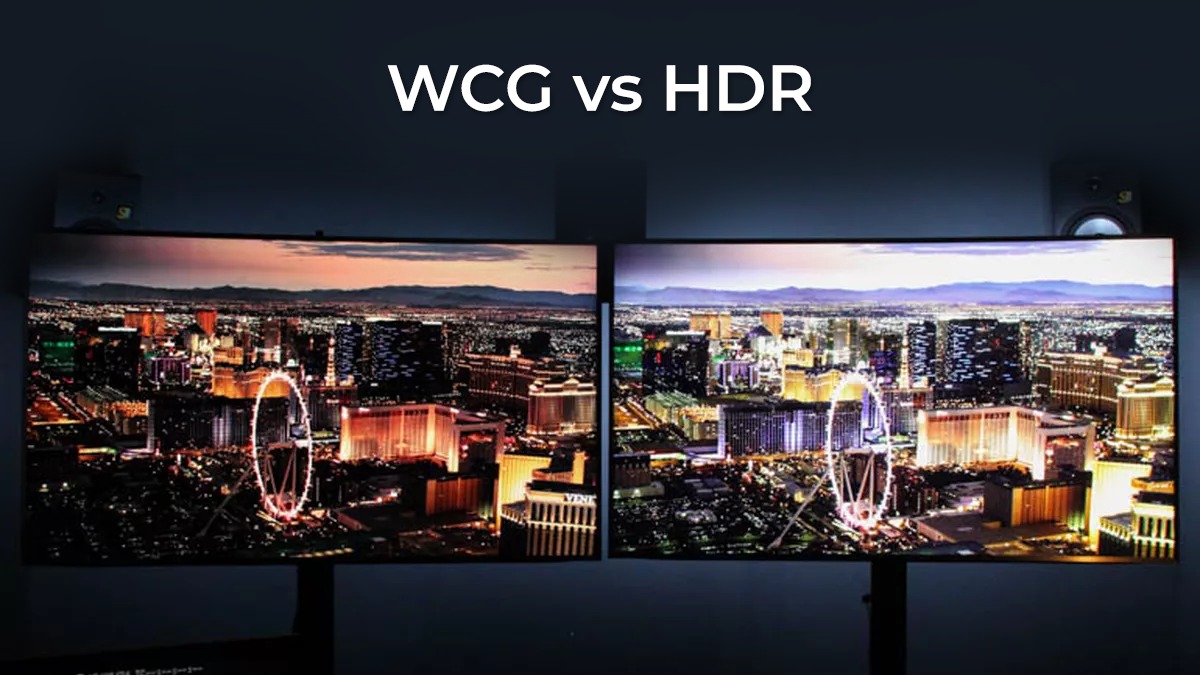HDR (High Dynamic Range) and WCG (Wide Color Gamut): How do these Television Technologies work?

When it comes to television displays and viewing quality, everything boils down to the quality and range of color reproduction on screen. It greatly matters how vast an array of colors, as well as grayscale contrast, is exhibited on a television screen. In the world of display technologies, two terms are frequently used: HDR (High Dynamic Range) and WCG (Wide Color Gamut). HDR has been present in the market for some time now, but little is known about WCG and what it brings to the viewing experience of television. Let’s explore both in detail.

What exactly is HDR?
HDR, or high-dynamic range, is currently one of the most coveted features in televisions. TVs supporting HDR formats tend to offer brighter highlights and a greater color detail range, for an overall punchier image.
The two most important factors in how a TV looks are contrast ratio, or how bright and dark the TV can get, and ‘color accuracy’, which is basically how closely colors on the screen resemble real life.

How does HDR work?
HDR improves the range of contrast (Contrast is the difference between the brightest whites and darkest blacks a TV can display) between the darker and brighter parts of an image on the screen. Bright parts of the image can get much brighter, so the image seems to have more "depth." Colors get expanded to show more bright blues, greens, reds, and everything in between, providing for an unparalleled viewing experience. It typically measured as a ratio, e.g. 1:2,000,000, which in this case would mean that that TV is capable of displaying a bright area that is 2,000,000 times brighter than its correspondingly darkest area.
By increasing the maximum number of nits for a given image, HDR TVs are capable of a higher contrast ratio.
HDR Format
There are three main HDR formats: HDR10, HDR10+, and Dolby Vision, each having their own advantages in bit depths in terms of the viewing experience.
Bit depth is a term that describes the number of graduations of colors in an image. While SDR content is typically mastered at 8-bit, allowing for 16.7 million colors, HDR and HDR10+ content is mastered at 10-bit, which allows for up to 1.07 billion colors! The greater the range of colors displayed, the more realistic the image appears, with less banding and a more subtle transition in areas of similar color.
Furthermore, Dolby Vision content allows for up to 12-bit color; which means it increases the number of colors to an impressive 68.7 billion! This allows for much finer control over gradations, resulting in a more life-like image, with no banding.

Where does WCG stand?
Wide color gamut (WCG) is along for the ride with HDR, it brings an even greater array of colors to the table. Where high dynamic range improves the dynamic range of a picture (with brighter brights and darker darks), wide color gamut increases the quality of reproduction of colors on the screen - redder reds, bluer blues, greener greens, etc.

A look at how WCG works
Wide color gamut displays more color through two steps:
First, it expands the color palette itself, making the primary colors: red, green, and blue deeper and secondary colors: magenta, cyan, and yellow much richer. Next, it increases the bit depth. Bit depth signifies how many steps of each color a TV has available; as in more shades between turquoise blue to dark blue. Where an ordinary HD TV would display 16 million colors, WCG-capable TV would display 1 billion colors.
The difference between HDR and WCG
The high dynamic range provides a greater range of luminance, with far greater detail in the lights and darks of picture elements. On the other hand, a wide color gamut allows a much wider range of colors to be displayed on a television screen. The combination of the two delivers content that is often more pleasing and immersive.

TCL Televisions equipped with HDR and WCG
TCL’s newly launched QLED, UHD, and Smart TVs are equipped with the latest versions of HDR and WCG technologies, promising to provide a futuristic viewing experience. Not only that, they come with fantastic additional features such as a 120Hz refresh rate (65-inch C815 only), sporting cutting edge technology, hands-free voice control, the latest Android OS, and many more!
TCL televisions are available for purchase on our website
Website: https://www.tclpakistan.com/










